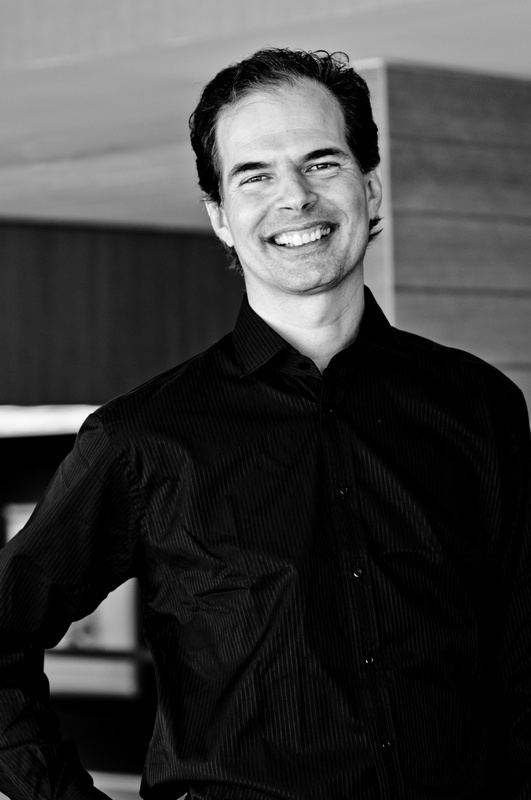Name Steve Omohundro | ||
 | ||
Role Artificial Intelligence scientist Books Geometric Perturbation Theory in Physics | ||
Panel lawrence krauss ben goertzel steve omohundro the perils of prediction
Stephen M. Omohundro (born 1959) is an American scientist known for his research on Hamiltonian physics, dynamical systems, programming languages, machine learning, machine vision, and the social implications of artificial intelligence. His current work uses rational economics to develop safe and beneficial intelligent technologies for better collaborative modeling, understanding, innovation, and decision making.
Contents
- Panel lawrence krauss ben goertzel steve omohundro the perils of prediction
- Podcast 134 steve omohundro talks technology for a better world bulletproof executive radio
- Education
- Efficient geometric learning algorithms
- Manifold learning and lipreading
- Model merging and grammar learning
- Family Discovery Learning Algorithm
- Self improving artificial lntelligence and AI safety
- Lisp parallel programming language
- Sather programming language
- Physics and dynamical systems theory
- Mathematica and Apple tablet contest
- Neural models of attention
- Bayesian image database search
- Pirate puzzle
- Gesture based user interfaces
- Publications
- References

Podcast 134 steve omohundro talks technology for a better world bulletproof executive radio
Education
Omohundro earned degrees in physics and mathematics from Stanford University and a Ph.D. in physics from the University of California, Berkeley.
Efficient geometric learning algorithms
Omohundro started the "Vision and Learning Group" at the University of Illinois which produced 4 Masters and 2 Ph.D. theses. He developed a number of efficient geometric algorithms for speeding up neural network, machine learning, machine vision, and graphics tasks, several of which are widely used. Omohundro created numerous algorithms based on k-d trees, including the balltree, boxtree, and bumptree geometric data structures.
Manifold learning and lipreading
Omohundro invented the general and widely used manifold learning task and introduced several algorithms for accomplishing this task. Omohundro, Chris Bregler and others extended these ideas and applied them to a wide range of visual learning and modelling tasks.
Model merging and grammar learning
Omohundro invented the Best-first model merging approach to machine learning. Omohundro and Andreas Stolcke applied this model to learning stochastic grammars. Their approach was very successful in learning Hidden Markov Models and Stochastic Context-free Grammars and is now widely used.
Family Discovery Learning Algorithm
Omohundro developed the Family Discovery Learning Algorithm, which discovers the dimension and structure of a parameterized family of stochastic models.
Self-improving artificial lntelligence and AI safety
Omohundro started Self-Aware Systems in Palo Alto, California to research the technology and social implications of self-improving artificial intelligence. He is an advisor to the Machine Intelligence Research Institute on artificial intelligence. He argues that rational systems exhibit problematic natural "drives" that will need to be countered in order to build intelligent systems safely. His papers, talks, and videos on AI safety have generated extensive interest. He has given many talks on self-improving artificial intelligence, cooperative technology, AI safety, and connections with biological intelligence.
*Lisp parallel programming language
At Thinking Machines Corporation, Cliff Lasser and Steve Omohundro developed Star Lisp, the first programming language for the Connection Machine. Omohundro also helped create the data parallel style of parallel programming and developed many parallel algorithm libraries and applications for the Connection Machine.
Sather programming language
Omohundro joined the International Computer Science Institute (ICSI) in Berkeley, California, where he led the development of the open source programming language Sather, which introduced a number of advances in object-oriented language design. Sather is featured in O'Reilly's History of Programming Languages poster.
Physics and dynamical systems theory
Omohundro's book Geometric Perturbation Theory in Physics describes natural Hamiltonian symplectic structures for a wide range of physical models that arise from perturbation theory analyses.
He showed that there exist smooth partial differential equations which stably perform universal computation by simulating arbitrary cellular automata. The asymptotic behavior of these PDEs is therefore logically undecidable.
With John David Crawford he showed that the orbits of three-dimensional period doubling systems can form an infinite number of topologically distinct torus knots and described the structure of their stable and unstable manifolds.
Mathematica and Apple tablet contest
From 1986 to 1988, he was an Assistant Professor of Computer science at the University of Illinois at Urbana-Champaign and cofounded the Center for Complex Systems Research with Stephen Wolfram and Norman Packard. While at the University of Illinois, he worked with Stephen Wolfram and others (D. Grayson, R. Maeder, H. Cejtin, D. Ballman and J. Keiper) to create the symbolic mathematics program Mathematica. He and Stephen Wolfram led a team of students that won an Apple Computer contest to design "The Computer of the Year 2000." Their design entry "Tablet" was a touchscreen tablet with GPS and other features that finally appeared when the Apple iPad was introduced 22 years later.
Neural models of attention
Subutai Ahmad and Steve Omohundro developed biologically realistic neural models of selective attention.
Bayesian image database search
Omohundro became a Research scientist at the NEC Research Institute, working on machine learning and computer vision, and was a co-inventor of U.S. Patent 5,696,964, "Multimedia Database Retrieval System Which Maintains a Posterior Probability Distribution that Each Item in the Database is a Target of a Search."
Pirate puzzle
Omohundro developed an intriguing extension to the game theoretic pirate puzzle that was featured in Scientific American.
Gesture-based user interfaces
Omohundro and 5 others invented U.S. Patent 7,775,439 B2 "Featured Wands for Camera Calibration and as a Gesture Based 3D Interface Device."
